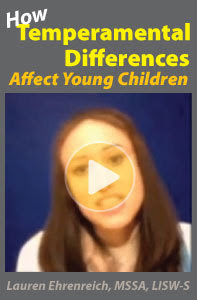New Online CE Course @pdresources.org
 Autism Spectrum Disorder: Evidence-Based Screening and Assessment is a 3-hour online continuing education (CE/CEU) course that summarizes proven approaches to screening, assessing and diagnosing ASD in children and young adults. More children and youth are being diagnosed with autism spectrum disorder (ASD) than ever before. Epidemiological research indicates a progressively rising prevalence trend for ASD over the past decade (Wing & Potter, 2009). Autism is much more prevalent than previously thought, especially when viewed as a spectrum condition with varying levels of symptom severity. Surveys focusing on this broader definition of autism indicate that ASD is one of the fastest growing disability categories in the world. Recent findings of the Centers for Disease Control and Prevention (CDC) Autism and Developmental Disabilities Monitoring Network ADDM (2014) indicate that one in every 68 school-age children (or 14.7 per 1,000 eight-year-olds) in multiple communities in the United States has been identified with ASD (Centers for Disease Control and Prevention [CDC], 2014). This estimate is roughly 30% higher than the estimate for 2008 (1 in 88), 60% higher than the estimate for 2006 (1 in 110), and 120% higher than the estimates for 2000 and 2002 (1 in 150). Autism is the fastest growing serious developmental disability in the United States and continues to be an important health concern (CDC, 2014).
Autism Spectrum Disorder: Evidence-Based Screening and Assessment is a 3-hour online continuing education (CE/CEU) course that summarizes proven approaches to screening, assessing and diagnosing ASD in children and young adults. More children and youth are being diagnosed with autism spectrum disorder (ASD) than ever before. Epidemiological research indicates a progressively rising prevalence trend for ASD over the past decade (Wing & Potter, 2009). Autism is much more prevalent than previously thought, especially when viewed as a spectrum condition with varying levels of symptom severity. Surveys focusing on this broader definition of autism indicate that ASD is one of the fastest growing disability categories in the world. Recent findings of the Centers for Disease Control and Prevention (CDC) Autism and Developmental Disabilities Monitoring Network ADDM (2014) indicate that one in every 68 school-age children (or 14.7 per 1,000 eight-year-olds) in multiple communities in the United States has been identified with ASD (Centers for Disease Control and Prevention [CDC], 2014). This estimate is roughly 30% higher than the estimate for 2008 (1 in 88), 60% higher than the estimate for 2006 (1 in 110), and 120% higher than the estimates for 2000 and 2002 (1 in 150). Autism is the fastest growing serious developmental disability in the United States and continues to be an important health concern (CDC, 2014).
The incidence of Autism Spectrum Disorder is also evident in the number of students receiving special educational services. For example, the number of students receiving assistance under the special education category of autism with increased dramatically between 2003 and 2012, increasing from 1.5 percent to 7.8 percent of all identified disabilities (U.S. Department of Education, 2014). A number of explanations for this dramatic increase in the incidence and prevalence of ASD have been proposed. They include: changes in diagnostic criteria; improved identification; growing awareness among parents and professionals; conception of autism as a spectrum disorder; and greater availability of services (Fombonne, 2005; Wing & Potter, 2009). Whatever the reasons, autism spectrum disorders are no longer rare conditions and it is likely that most professionals such as clinical and school psychologists, mental health counselors, speech/language pathologists, occupational therapists, and special educators will encounter an increasing number of children and youth with ASD who account for nearly 1% of the overall student population.
The objectives of this course are to identify DSM-5 diagnostic changes in the ASD diagnostic criteria, summarize the empirically-based screening and assessment methodology in ASD, and describe a comprehensive developmental approach for assessing children, adolescents, and young adults with ASD. Course#30-94 | 2017 | 49 pages | 20 posttest questions
- CE Credit: 3 Hours
- Target Audience: Psychologists | Counselors | Social Workers | Occupational Therapists | Marriage & Family Therapists | Nutritionists & Dietitians | School Psychologists | Teachers
- Learning Level: Intermediate
- Course Type: Online












